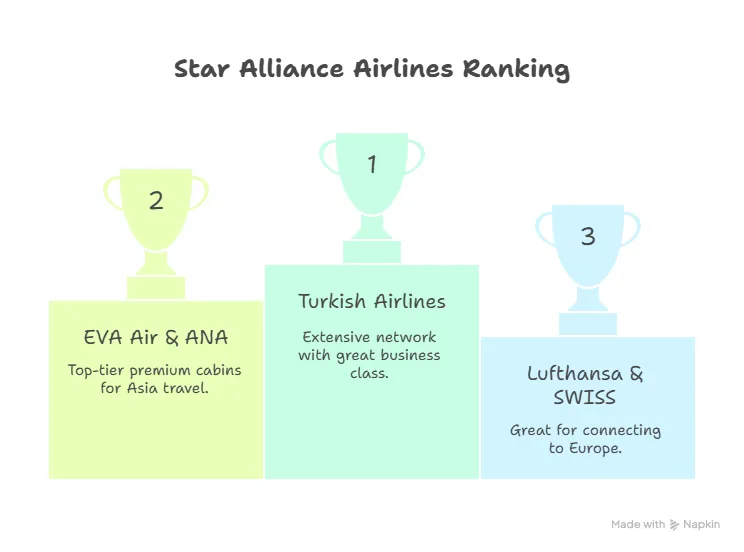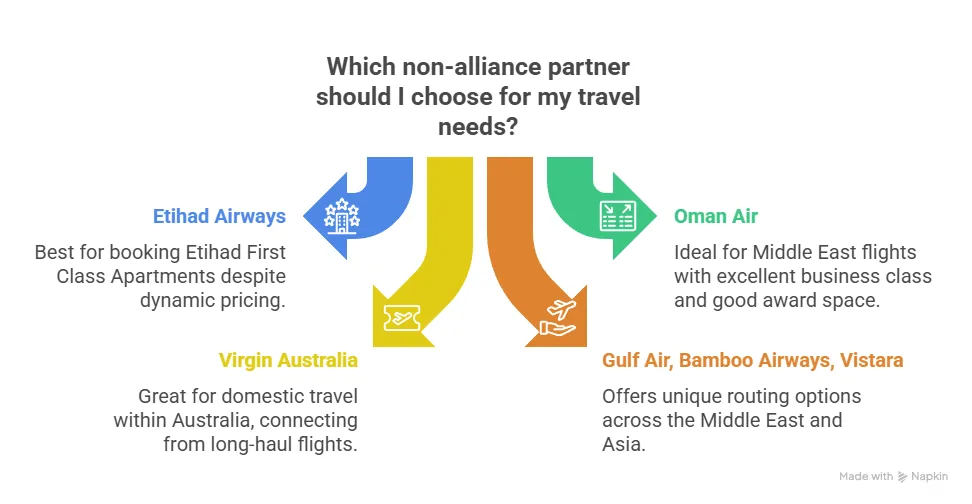On This Page
Part 1: Understanding the Aeroplan Program Fundamentals
Before you can optimize a system, you have to understand its architecture. Aeroplan is a distance-based, region-zoned hybrid program. This means the cost of an award flight is primarily determined by the total miles flown between specific zones of travel. It sounds complex, but it’s a logical framework that, once understood, is highly exploitable.
The program’s strength lies in its vast network of over 45 partner airlines and its flexible routing rules. While the introduction of Aeroplan’s Dynamic Pricing & Partner Awards for some airlines has introduced a new level of volatility, the core system of fixed-price awards for the majority of partners remains the program’s bedrock. The key is knowing which rules apply to which airline.
Part 2: How to Earn Aeroplan Points (The Right Way)
Accumulating points is the first step, and doing it efficiently is critical. Blindly swiping a credit card is the slow route; a multi-channel approach is the only way to build a significant balance quickly.
Credit Card Transfer Partners
This is the primary method for most U.S.-based travelers. Aeroplan is a transfer partner of all major flexible point currencies, and transfers are typically instant. This is a massive advantage, as it allows you to keep your points in a flexible currency until you’ve found the exact award you want to book.
- American Express Membership Rewards (1:1 ratio)
- Chase Ultimate Rewards (1:1 ratio)
- Capital One Miles (1:1 ratio)
- Bilt Rewards (1:1 ratio)

I almost never transfer points speculatively. The ability to confirm award availability before moving points from a program like American Express is a fundamental risk-management strategy. One time I transferred points because of a 30% bonus and then shortly after the program was devalued. So be careful with this.
Aeroplan Co-Branded Credit Cards
For those deeply invested in the Aeroplan ecosystem, the Chase Aeroplan Card is a strong contender. It not only offers a solid welcome bonus but also grants automatic Aeroplan 25K elite status for the first year and preferred pricing on Air Canada award flights. This can be a strategic way to get a slight discount on dynamically priced awards.
Other Ways to Earn
Don’t overlook other earning avenues. You can earn points through the Aeroplan eStore shopping portal, by booking hotels through Aeroplan Hotels, and by crediting flights on Star Alliance partners directly to your Aeroplan account.
Part 3: How to Redeem Aeroplan Points—Deconstructing the Award Charts
This is the core of the system. Aeroplan uses multiple award charts, and knowing which one applies to your desired booking is non-negotiable. The search engine automatically combines them, so you need to be able to identify what you’re looking at.
The Four Key Award Charts
| Award Chart | Applies To | Pricing Model | Key Feature |
|---|---|---|---|
| Air Canada Chart | Flights operated by Air Canada only. | Dynamic | Prices fluctuate wildly based on demand. Has a published price range, but can be very high. |
| Air Canada & Select Partners Chart | Flights with Air Canada and partners like United, Etihad, Emirates, etc. | Dynamic | The most recent, problematic change. No published maximum. This is where you see massive point costs. |
| Partner Award Chart | Flights on the other ~40 partners (Lufthansa, SWISS, ANA, etc.). | Fixed | This is where the value is. Predictable pricing based on distance and zones. This is your primary target. |
| North America Chart | Flights within North America on Air Canada and United. | Hybrid | A specific, distance-based chart for intra-North America travel. |
Your goal is almost always to book awards that fall exclusively on the “Partner Award Chart.” Even a single segment operated by Air Canada on an international itinerary can sometimes throw the entire booking into the more expensive dynamic model. See Air Canada Rewards Chart
Part 4: The Power of Aeroplan Partners
Aeroplan’s unmatched partner network is its greatest asset. This includes all Star Alliance members plus a unique and growing list of non-alliance partners. This is your key to unlocking incredible destinations with fixed, predictable pricing.
Star Alliance Partners
This forms the backbone of the network. You can redeem your points on world-class airlines like:
- Lufthansa & SWISS: Great for connecting to Europe, though they often have high surcharges and are also leaning into their own dynamic awards.
- Turkish Airlines: Extensive network with a great business class product.
- EVA Air & ANA: Top-tier premium cabins for travel to Asia. Award space is competitive but worth the hunt.
- United: Now dynamically priced and often a poor value, but its vast domestic network can be useful for positioning flights if you find a rare deal.

Unique Non-Alliance Partners
This is where the advanced players find incredible value. These partners are often overlooked, meaning less competition for award seats.
- Etihad Airways: Now dynamically priced, which has devalued many redemptions. However, it’s still the only way to book the famous Etihad First Class Apartments with points.
- Oman Air: A fantastic option for flights to the Middle East and beyond. Their business class is excellent and award space can be good.
- Virgin Australia: A great way to travel within Australia, connecting from a long-haul flight.
- Gulf Air, Bamboo Airways, Vistara: These partners open up unique routing possibilities across the Middle East and Asia.

Learning the routes and hubs of these non-alliance partners is like having a secret weapon. I use a tool like FlightConnections to map out potential routes on these more obscure partners before even starting a search on the Aeroplan site. When I decided for a destination for a vacation I first try to book the direct route but if there is not availablity I try to find other ways using this method.
Part 5: Advanced Strategies for Maximum Value
Now we get to the fun part: exploiting the rules of the system to build incredible trips for a fraction of the points you’d otherwise pay.
The 5,000-Point Stopover: Aeroplan’s Best Feature
This is, without a doubt, one of the best features in any loyalty program. For just 5,000 extra Aeroplan points, you can add a stopover of up to 45 days in another city on a one-way award. This means you can essentially visit two destinations for the price of one.
Example: A business class flight from New York to Singapore on a partner airline might cost 87,500 points. For 92,500 points (87,500 + 5,000), you could fly from New York to Istanbul, spend three weeks exploring Turkey, and then continue on from Istanbul to Singapore. It’s a game-changer for building epic itineraries.
Note: You cannot add a stopover in the U.S. or Canada on an international itinerary, and you must book it via the multi-city search tool or by calling Aeroplan.
Aeroplan Family Sharing
This feature allows up to 8 family members to link their accounts and pool their points for free. All points earned by members go into the shared pool, and the Family Lead can redeem from that balance. This is incredibly useful for families or couples who might have smaller point balances in individual accounts, allowing them to combine their earnings for a single large redemption.
Navigating Fees and Surcharges
Aeroplan famously has no fuel surcharges… mostly. They’ve eliminated them on their own flights and for most partners. However, some partners (like Lufthansa, Austrian, and some others) still have significant carrier-imposed surcharges passed on. Always check the cash component of an award before booking. Additionally, be aware of the $39 CAD partner booking fee which applies to all award tickets.
Part 6: Practical Considerations and Logistics
Booking Lap Infants
Aeroplan has one of the best lap infant policies. You can add a lap infant (under 2) to an award ticket for a flat fee of just $25 CAD or 2,500 points. This is an incredible deal compared to most airlines that charge 10% of the adult cash fare, which can be thousands of dollars for a business class seat.
Changing and Canceling Awards
Aeroplan’s change and cancellation fees are relatively reasonable. You can expect to pay around $100-$175 for changes or cancellations, depending on the fare class and your elite status. This flexibility is valuable in a world of uncertain travel plans. It’s one reason I’m often willing to book a speculative award far in advance if I find a good deal.
Conclusion: Aeroplan is a System to Be Mastered
While the recent introduction of dynamic pricing on key partners was a significant blow, Aeroplan remains an S-tier loyalty program. Its unmatched partner network, powerful stopover rules, and family sharing features provide a rich toolkit for the strategic traveler. The value has shifted away from easy, obvious redemptions on airlines like United and now lies with those willing to learn the intricacies of the fixed-price partner chart and explore less-traveled routes.
Success with Aeroplan in 2025 and beyond requires a systematic approach. Understand the charts, prioritize fixed-price partners, and leverage the routing rules. Do that, and you’ll continue to unlock travel experiences that would otherwise be out of reach.
Frequently Asked Questions About The Aeroplan Program
Which credit card points transfer to Aeroplan?
Aeroplan is a transfer partner of all major U.S. flexible point currencies: American Express Membership Rewards, Chase Ultimate Rewards, Capital One Miles, and Bilt Rewards. All typically transfer at a 1:1 ratio. Sometimes there is even a bonus of up to 30%.
Can I combine points from different partners on one award ticket?
Yes, you can mix multiple partner airlines on a single Aeroplan award ticket. However, be aware that including a dynamically priced partner (like United) with a fixed-price partner (like SWISS) can cause the entire itinerary to be priced dynamically, so it’s best to stick to partners on the same award chart.
What is the best “sweet spot” in the Aeroplan program?
One of the best current sweet spots is flying business class between North America and the “Atlantic zone” (most of Europe) for just 60,000 points on partners like SWISS or SAS, especially when you add a stopover for 5,000 more points. Another is business class to Asia 1 (e.g., Japan) for 55,000 points on partners like ANA.
How do I search for partner award availability?
The Aeroplan website is the best place to search. For Star Alliance partners, you can also cross-reference availability on other sites like United.com (while logged out) to find “I” (business) or “X” (economy) saver award space, which should then be bookable via Aeroplan. It’s always best to search segment by segment for complex trips.


